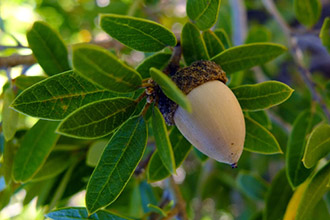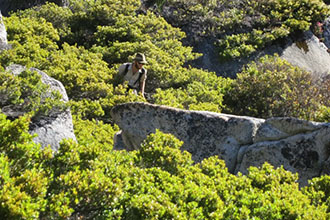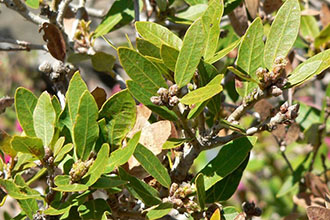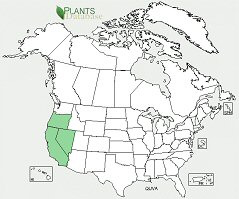Taxonomy: Kingdom Plantae (plants). Subkingdom - Tracheobionta (vascular plants). Superdivision - Spermatophyta (seed plants). Division - Magnoliophyta (flowering plants). Class - Magnoliopsida (dicotyledons). Subclass - Hamamelididae. Order - Fagales. Family - Fagaceae. (beech). Genus Quercus L. (oak) Species - Quercus vacciniifolia Kellogg (huckleberry oak).
Ecology: Huckleberry oak is a native, drought-resistant, evergreen, erect to prostrate, spreading shrub. It grows from 0.6-1.2 m high. Branches are slender and flexible, with smooth bark. Leaves are sclerophyllous [leathery] and brittle.
Huckleberry oak is an edaphic or fire-climax species on some sites . In the absence of fire and under favorable soil conditions, huckleberry oak is facultative seral to coniferous species.
Huckleberry oak is found on xeric sites such as dry, windy ridges from 305-3,049 m in elevation. Huckleberry oak affords excellent erosion control on steep slopes of watersheds. Nursery seedlings have been planted in the Lake Tahoe Basin as a part of a project to control erosion and reduce sediment entering Lake Tahoe.



